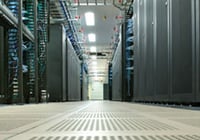 Hardware and software refreshes are often viewed as expensive capital investments that never last long enough. When properly planned for, though, refreshes can enable your practice’s growth by boosting productivity and user satisfaction.
Hardware and software refreshes are often viewed as expensive capital investments that never last long enough. When properly planned for, though, refreshes can enable your practice’s growth by boosting productivity and user satisfaction.
Even with cloud adoption, practices still face cyclical hardware and software upgrades for on-premise technology assets like workstations, kiosks and mobile devices. How do you know if your practice needs a refresh? How much will it cost? Do you have the staff support necessary for this kind of refresh?
In this three-part blog series, we’ll explore the timing of what assets need to be upgraded, the typical lifecycle of common IT assets and calculate the real cost of IT.How do you know if your practice is ready for hardware and/or refresh?
- Performance issues.
New applications with more complex features put stress on aging hardware, resulting in performance problems and system slowness. Performance issues typically lead to decreased productivity from frustrated users. - Current hardware/software versions are no longer supported.
As hardware manufacturers and software providers sunset products, they will no longer offer support or upgrades for them. Operating without this support blanket can cause vulnerability and security risks. - Implementing new initiatives.
As you implement new technologies to grow your practice, its effect on hardware and software should also be evaluated. For instance, a new PACS system requires server resources with optimized performance capabilities. Installing PACS software on your aging servers would result in poor performance and unhappy users. - Approaching or past warranty.
Most hardware comes with a manufacturer warranty and an option for an extended warranty that practices often purchase. Once that warranty is expired, the practice takes on the risk of that hardware failing without any plan for backup.
Business changes can also impact your practice’s need to re-evaluate your entire hardware/software refresh cycle. These business changes could include employee growth, a new EHR, changes to your office or additional offices added, or new external services such as remote radiology.
What is the typical lifespan of my IT assets?
Typical lifespans can vary and will depend on how well your assets were maintained throughout their lifetime. Based on best practices and what we have seen in our decades of serving healthcare practices, here are some general guidelines for refresh.
|
Asset |
Recommended Refresh – |
Recommended Refresh – |
|
Servers |
4 years |
Cloud provider maintains servers, removing burden from practice to refresh |
|
Network Equipment |
5 years |
Cloud provider maintains network equipment, removing burden from practice to refresh |
|
Storage |
3-5 years |
Cloud provider manages storage, removing burden from practice |
|
Tape/backup hardware |
5 years |
Cloud provider maintains tape/backup hardware, removing burden from practice to refresh |
|
Workstation devices |
3 years |
4-7 years* |
|
Mobile Devices |
2 years |
2 years |
* Workstation devices have a longer lifespan when using cloud services because no data is left on the local machine.
What’s at stake?
Organizations tend to push their luck with regards to hardware and software upgrades, prolonging the inevitable for as long as possible. The time and money investments makes upgrading unattractive and undesirable. But, pushing these upgrades out may be costing your business hundreds if not thousands of dollars a day.
For instance, assume a provider in an exam room clicks through 10 different screens during an exam. The desktop computer she’s using is dated and performs slower than it should, taking 4 seconds between every screen click. If she sees 25 patients per day, she’s spending almost 17 minutes waiting for the screen to load because the computer is outdated and slow. This is time she could be spending seeing an additional patient. Now multiply that across all your providers and your patient potential could be much greater.
In addition to missed productivity due to performance issues, prolonging your hardware updates can have more drastic, noticeable repercussions like security vulnerabilities caused by outdated software versions or hardware upgrades that were never done. If exposed, these vulnerabilities could wreak havoc for your practice’s ePHI.
The benefits of a timely refresh and upgrade schedule far outweigh the risks when user productivity, practice ePHI and user satisfaction are on the line. An alternative is using a cloud service provider who can easily handle the maintenance of hardware and software refreshes, and accommodate to business changes that happen at your practice.
Watch for our next blog in this series where we lay out how to plan a hardware and software refresh to account for the ripple effects of IT.
 Support
Support Contact Us
Contact Us



